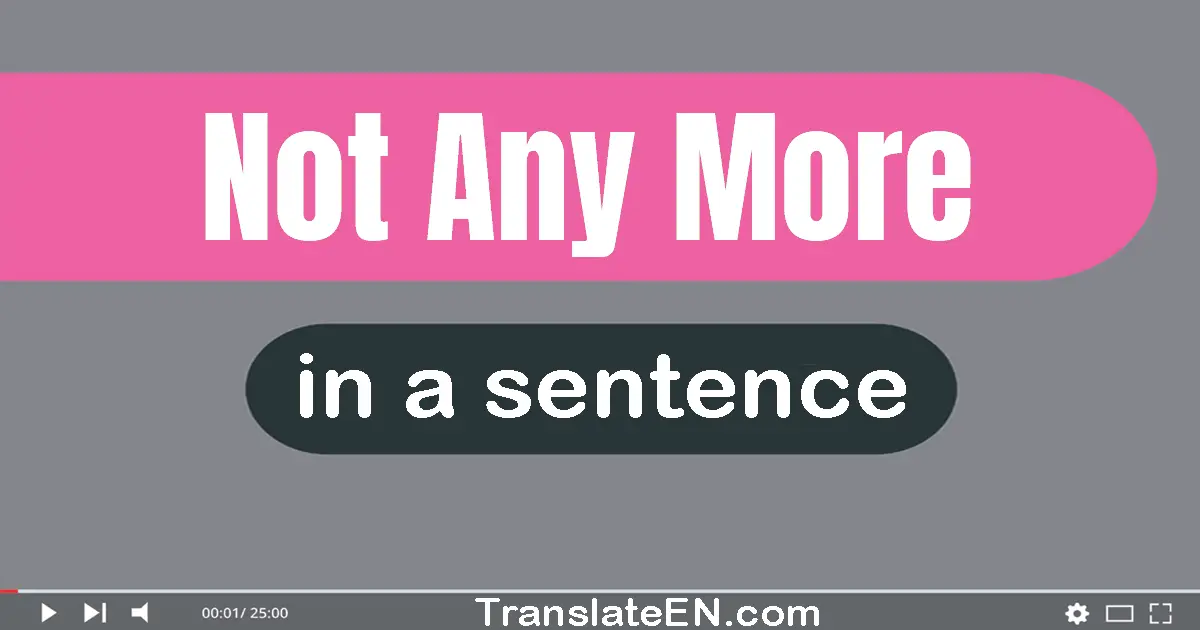Not Any More in a sentence

Not Any More meaning
Not any more is a phrase commonly used to indicate that a particular situation or condition has changed or ceased to exist. It is often employed to express the idea that something that was once true or present is no longer the case. This phrase can be used in various contexts, and mastering its usage can greatly enhance your communication skills. Here are some tips on how to effectively incorporate "not any more" into your sentences:
1. Clarify the change: When using "not any more," it is essential to clearly state what has changed. Specify the previous condition or situation that is no longer applicable.
For example, "I used to be afraid of heights, but not any more."
2. Use it to express a shift in behavior: "Not any more" can be employed to convey a change in someone's actions or habits. For instance, "She used to smoke, but not any more. She quit last year."
3. Highlight a discontinued state: This phrase can be used to emphasize that a particular state or condition has come to an end.
For example, "The store used to sell those shoes, but not any more. They discontinued the line."
4. Indicate a past occurrence: "Not any more" can also be used to refer to something that was true or present in the past but is no longer the case. For instance, "He was a member of the club, but not any more. He resigned last month."
5. Contrast with the present: Use "not any more" to create a contrast between the past and the present. This can help highlight the change that has taken place.
For example, "I used to struggle with public speaking, but not any more. I have gained confidence over time."
6. Employ it to express relief or satisfaction: "Not any more" can be used to convey a sense of relief or satisfaction that a particular situation has changed. For instance, "I used to have a long commute to work, but not any more. I moved closer to the office."
7. Combine with other phrases: "Not any more" can be combined with other phrases to provide additional context or emphasize the change.
For example, "I used to dislike spicy food, but not any more. I've developed a taste for it."
8. Pay attention to verb tenses: When using "not any more," ensure that the verb tense aligns with the intended meaning. If referring to a past change, use past tense verbs. If discussing a current change, use present tense verbs.
9. Consider the tone and context: The tone and context of your sentence will influence how "not any more" is perceived. Ensure that the usage aligns with the overall tone and intention of your message.
10. Practice using the phrase: To become more comfortable with incorporating "not any more" into your sentences, practice using it in various contexts. This will help you develop a natural flow and improve your overall language skills.
In conclusion, "not any more" is a versatile phrase that can effectively convey a change or cessation of a particular situation or condition. By following these tips and practicing its usage, you can confidently incorporate this phrase into your sentences and enhance your communication abilities.
The word usage examples above have been gathered from various sources to reflect current and historical usage of the word Not Any More. They do not represent the opinions of TranslateEN.com.
